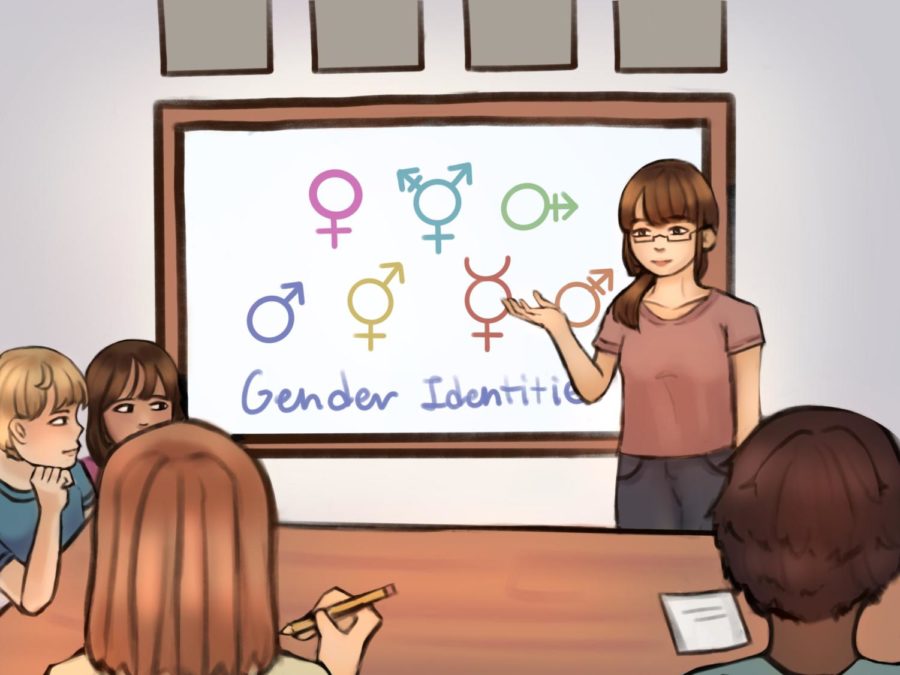Staff Editorial: Expansion of sex ed benefits school community
Illustrated by Rachel Neathery
The revisions to the FLE curriculum would entail co-educational classes, much like the one depicted above, on topics ranging from gender and sexual identity to the menstrual cycle. These changes stand in stark contrast to the gender-separated and less comprehensive instructional methods of years past—all the while empowering and accommodating the entire student body.
March 6, 2023
From a baby-delivering stork to “the birds and the bees,” society has come up with euphemisms galore in the endeavor to teach kids about sex while maintaining some discretion and avoiding undue embarrassment.
Fortunately, Fairfax County offers “age-appropriate” sex education for students in grades four through 12 through Family Life Education (FLE). And though parents may not be happy with the gender-inclusive additions slated for the curriculum, embracing these aspects offers a slew of benefits that should not be understated.
Contraceptive use, abortions and sex trafficking are issues currently covered by FLE. But in also recognizing the significance of “sexuality and gender” development per recommendations by the Family Life Education Curriculum Advisory Committee (FLECAC), several students would gain a crucial support system.
According to The Trevor Project, 45% of LGBTQ youth have “seriously considered” suicide this past year, a figure that is reduced in those attending a school that affirms their identity. By invoking an “appreciation for individual differences” that exist within students’ gender identity and sexual orientation, FLE would allow for the normalization of gender and sexual diversity—creating a markedly safer space for the 17% of county teens who identify as LGBTQ.
Adopting FLECAC recommendations on gender-combined instruction about the female reproductive system would also advance gender equality. According to a poll by Thinx, 42% of women have been “period-shamed,” with one in five feeling as such due to comments made by men.
However, if students are made to understand its workings, the stigma around menstruation may very well be eradicated. In turn, not only would women benefit from higher self-esteem and reduced judgment by their male counterparts, but they would also experience vastly improved societal attitudes around their bodies.
Plus, gender-combined sex ed would foster healthier relationships among students in general. According to Fairfax County Youth Survey data, 22.5% of female students and 8.5% of male students from grades eight through 12 reported facing sexual harassment in the past year. In understanding more acutely the body of the opposite sex and its sensitivities through co-educational classes, teens would likely feel more inclined to respect peers’ boundaries and become better equipped not to accidentally initiate unwanted contact.
Students may even be willing to entertain open discussions on sex with the alienation and discomfort that accompany gender-separated lessons gone, a skill that will serve them well when establishing relationships moving forward.
Some might deem the pending changes to FLE as unnecessary or otherwise unimportant, while others simply shudder at the thought of sitting through a lecture on reproductive organs in a co-ed environment. Regardless, it is evident that the merit of sex ed expansion in accommodating and empowering the student body outweighs the visceral discomfort a few might feel upon its implementation. Ultimately, we owe it to the community to welcome a more all-encompassing FLE curriculum—and bring society a step closer to achieving social equity.


